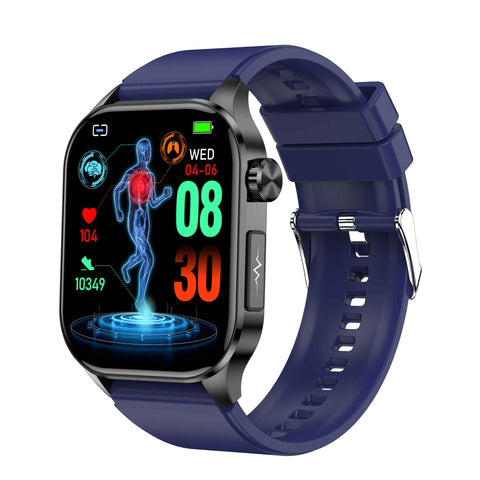Smart Watch Online
In the era of digital health, wearable devices like the BP Doctor smartwatch are changing the way we monitor and manage our health. Among its many functions, accurate measurement of important health data occupies a central position. When we entrust these smartwatches to provide insights into key metrics such as blood pressure, we must delve into how to optimize and improve the accuracy of the measurements they generate.
In this guide, we'll explore practical tips and techniques to ensure the BP Doctor smartwatch provides accurate and reliable health information, allowing users to make informed decisions about their cardiovascular health.
1. How to make the measurement results more accurate
- When you are relaxed and quiet for active testing, the results are more accurate.
- During the active test, please keep a relaxed sitting posture, breathe evenly, do not exercise or talk, put your hands and arms on the table, stretch forward and bend naturally. Movement or speech may cause additional signal interference, resulting in inaccurate test results.
- The device measures your heart rate through photoplethysmography, and the degree of tightness of the wearer should be able to insert the tip of the wearer's little finger to adapt. Wearing it too loosely may cause heart rate measurement failure, and wearing it too tight will affect blood circulation and cause abnormal analysis results.
- The device can truly record your 24-hour physical status changes. It is recommended to wear it 24 hours a day except for special situations such as charging and washing.
2. What factors will affect the heart rate monitoring results throughout the day?
- Non-standard wearing methods will affect the monitoring of heart rate, ECG detection and other signals: such as light leakage caused by incomplete fit and slight movement of the bracelet on the skin.
- Wearing the wristband too tightly, raising the arm and clenching the fist will affect blood circulation, which may also affect the monitoring of heart rate and electrocardiogram detection.
- When worn correctly, individual differences such as skin color, hair, tattoos, and scars may also affect heart rate, ECG, and other monitoring.
3. Why is the measurement of ECG always noisy?
The wristband measures the data by detecting the bioelectric current in the skin, so the skin must not be too dry. If it is too dry, the electrode pads of the wristband will not be able to detect the current data, which will cause the ECG detection to fail.
4. What should I do if I cannot measure heart rate, blood pressure, ECG, blood oxygen, respiration rate, sleep and other data?
- After connecting to the APP, set the skin color close to your own skin in the personal information, because there is a wearing detection function that needs to pass the wearing detection to monitor normally.
- Check whether there is any stain on the bottom of the wristband, which will affect the electrode pads of the sensor and ECG function, making it impossible to detect.










